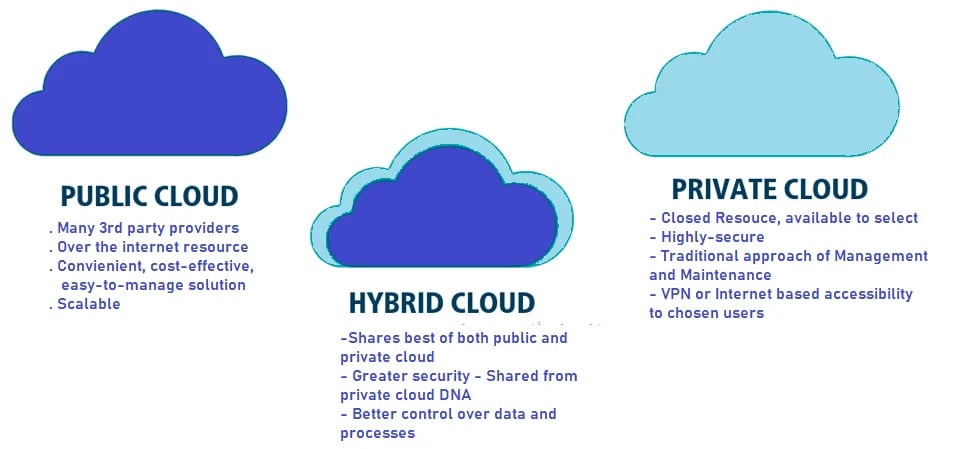The Targeted Killing of General Soleimani: Its Lawfulness and Why It Matters
On Jan. 3, a specific drone strike in the vicinity of Baghdad Global Airport killed Iranian Maj. Gen. Qassem Soleimani. Killed alongside with him was Abu Mahdi al-Muhandis, deputy commander of Iraq’s Well-liked Mobilization Forces (PMFs), or Hashd al-Shaabi, and leader of the Iraqi militia Keta’ib Hezbollah. Reportedly, 4 other folks have been also killed. So, considerably there has been no official justification for the killing of al-Muhandis, just indirect reference to his position in Iraq, which would have a tendency to present that, together with the other 4 people today, he was not qualified.
A number of several hours following the strike, the U.S. Division of Defense (DoD) claimed that the U.S. armed forces had taken this “decisive action” in opposition to Soleimani at the ask for of President Donald Trump for the reason that “General Soleimani was actively establishing options to attack American diplomats and services users in Iraq and all through the area.” The statement went on to refer to the responsibilities of Soleimani and his Quds Force for the fatalities of hundreds of American and coalition provider customers, assaults on coalition bases, and the assaults on the U.S. Embassy in Baghdad. The Pentagon concluded that “This strike was aimed at deterring potential Iranian attack options.”
Subsequently, Trump designed a public assertion claiming that the strike “aimed at stopping a war, not setting up a single.” Since then, U.S. officers have shifted the logic of their justification from the original angle of retaliation and obscure references to probable potential assaults, to emphasis on the risk of “imminent” attack.
In its reaction, Iran has promised “vigorous revenge” for the U.S. assault. The US has then engaged in a belligerent tit-for-tat narrative which include a promise to concentrate on Iranian cultural web pages, which would itself be a violation of intercontinental humanitarian law (IHL).
Among commentators, substantially of the target has been on the killing’s implications for peace in the Middle East and globally on regardless of whether it served U.S. standing and pursuits, and on the political and military reasoning at the rear of the final decision to goal Soleimani.
On the other hand, to date, the legality of the strike under worldwide law, the focus of this report, has acquired noticeably considerably less interest. Analyzing the killing of Soleimani from an global regulation standpoint issues a fantastic offer. It is, in my view, the key framework by way of which the additional territorial use of drive ought to be assessed, irrespective of whether the U.S. considers by itself bound by it or not. Reasserting the primacy of intercontinental legislation in this kind of times of disaster is a solemn and foundational responsibility of and for the intercontinental community.
My stage of departure for examining the strike follows that of former UN Unique Rapporteur Christof Heyns, who wrote in a 2013 report to the UN that for a particular drone strike to be lawful, it must fulfill the legal prerequisites less than all relevant international authorized regimes, namely: the law regulating inter-state use of power (jus ad bellum) intercontinental humanitarian legislation (jus in bello) and worldwide human legal rights legislation (IHRL). It is also my perspective that on its have jus advert bellum is not adequate to tutorial the use of pressure excess territorially and that other legal frameworks and ideas utilize. These types of a place is backed up by the Worldwide Law Commission (ILC) Draft Content articles on Point out Accountability, which condition that:
“As to obligations under international humanitarian law and in relation to non-derogable human rights provisions, self-defense does not preclude the wrongfulness of conduct.[1]”
In my original evaluation of the strike, ahead of the U.S. claimed duty, I concentrated on jus ad bellum and IHRL and argued that exterior the context of active hostilities, the use of drones for targeted killing is just about never ever likely to be authorized. Below, I will briefly current the requirements beneath both equally legal frameworks and then convert my interest to IHL and look for to describe why I did not, and do not, suppose that worldwide humanitarian legislation automatically applied to this specific strike.
Jus advertisement bellum: According to Short article 51 of the UN Charter and customary intercontinental legislation, a State may well invoke self-protection, which includes far more controversially, anticipatory[2] self-protection, to justify its use of power in yet another State’s territory when an armed attack, owning arrived at a certain threshold of gravity, occurs or is imminent. Global jurisprudence and Point out procedures propose that self-defense simply cannot be invoked to reduce a danger from arising nor can it be invoked in retaliation for past gatherings. It can be invoked only towards a danger that is currently present and which is “instant, too much to handle and leaving no preference of signifies, no second of deliberation.” In addition to imminence, the qualified killing of Soleimani must also meet up with two other specifications under jus advert bellum: requirement and proportionality. Necessity calls for that there would be no other alternate to the use of military power. Under the exam of proportionality, power should be utilised only to the extent vital. The US would as a result have to show that killing Soleimani would have prevented an imminent attack and that it was the only way of protecting against these types of assault.[3]
Following the initial DoD statement, the Trump and other officials have sought to insist that an attack under the direction of Soleimani was imminent, prompting the Washington Article to state that “imminent” is the vital phrase in U.S. justifications for the killing of an Iranian basic.
Even so, the number of aspects made publicly accessible consequently much do not create a factual foundation for the declare that any attacks have been imminent, enable alone that Soleimani was critical to their implementation. On Jan. 5, the Iraqi prime minister said that, to the opposite, Standard Soleimani had arrive to Iraq seeking to de-escalate tensions with the U.S. and had requested the Iraqi govt to act as a mediator for this objective, elevating more uncertainties as to imminence of a person or various “armed assaults.”
It is also worth emphasizing that if this was self-defense (executed preemptively), then the U.S. ought to have now knowledgeable the UN Safety Council. Write-up 51 of the UN Constitution imposes these types of an obligation quickly right after the self-defense act. This has not (yet) took place, a different aspect contacting into question the legality of the strike.
Global human rights law (IHRL): As a standard theory, the intentional, premeditated killing of an particular person would be unlawful below worldwide human legal rights legislation. There are exceptions to this rule. For instance, the death penalty is permitted for States that have retained it but only when executed less than extremely rigid circumstances. The use of lethal force by State brokers might be lawful only as a suggests of previous vacation resort for attaining just one legitimate intent: that of safeguarding existence. Deliberately lethal or most likely lethal pressure can be utilised only the place strictly vital to secure in opposition to an imminent danger to lifetime. There is an substantial jurisprudence and lawful viewpoints on this make a difference. But, at a simple amount, for the strike towards Soleimani to be lawful underneath IHRL, the U.S. would have to show that he constituted an imminent risk to the lives of other individuals and that, in buy to protect these life, there was no other solution but to use deadly pressure from him.
As a result considerably, the justifications state-of-the-art by U.S. officials and the U.S. president have targeted mainly on the previous functions of Soleimani and the grave crimes for which he is considered liable. And, there certainly appears to be to be a lot of proof linking Soleimani to critical human rights violations in Iran, Syria, Iraq and elsewhere. But his past involvement in human legal rights violations or, in fact, in acts of terror, is not adequate to make his killing lawful. Further, it is difficult to see how the U.S. could reveal and justify the killings of five other folks touring with him or standing all around the motor vehicle at the time of the drone strike. All those deaths can only be explained as arbitrary deprivations of lifestyle underneath human rights regulation and need to outcome in Point out responsibility and unique legal liability. Although international humanitarian law may permit so-named collateral hurt, this is not the circumstance below global human rights legislation or at minimum not to the exact diploma. In this distinct case, the killings of these other folks would obviously represent a violation of U.S. obligations beneath post 6 of the Global Covenant on Civil and Political Legal rights (ICCPR). In look at of the presence of these 5 people today, which include al-Muhandis conclusions should have been created not to continue with the qualified killing.
Because 1995, the U.S. has argued that obligations underneath the ICCPR only use to people who are each within the territories of a State get together and matter to that Point out party’s sovereign authority, (though it amended this situation with regard to the further territorial software of the Convention Versus Torture in 2014). The U.S. posture operates contrary to that of the UN Human Legal rights Committee (HRC), to the jurisprudence of the Worldwide Courtroom of Justice and to State observe – all of which have verified that human rights treaties obligations apply to the perform of States outside the house nationwide boundaries. In its latest Typical Remark on the Ideal to Lifestyle (Typical Comment 36), the HRC has determined that the scope of a Point out obligation to protect extends to
“all folks subject matter to the State’s jurisdiction, that is, all folks around whose satisfaction of the suitable to life it physical exercises power or powerful handle.”
The purposeful theory of the extraterritorial application of human rights treaties is significantly pertinent to the circumstance of a drone strike: The US experienced energy or manage more than Soleimani’s pleasure of the proper to lifestyle. While this sort of arguments may not affect the apply of the U.S., it is crucial to point out that, in its rejection of its further territorial human rights obligations, the U.S. is an extreme outlier. The drone strike on Soleimani constituted most likely a violation of U.S. obligations beneath article 6 of the ICCPR.
Worldwide humanitarian legislation (IHL): In my initial assessment of the specific killing of Soleimani, I centered solely on the regulation governing the use of power and on intercontinental human rights law as the two relevant bodies of legislation, rather than on international humanitarian law. Quite a few variables prompted me to do so, all of which pointed to diverse doctrinal interpretations and tensions and as a result to the absence of authorized certainty as to the existence of an international armed conflict (IAC).
In accordance to the so-named “first shot” principle, even
“minor skirmishes involving the armed forces, be they land, air or naval forces, would spark an intercontinental armed conflict and lead to the applicability of humanitarian law. Any unconsented-to armed forces operations by 1 Condition in the territory of a further Point out ought to be interpreted as an armed interference in the latter’s sphere of sovereignty and so may possibly be an intercontinental armed conflict beneath Write-up 2(1).”
It could hence be argued that the incidents more than the last couple of months these types of as the Dec. 27 rocket assault in Kirkuk that killed an American contractor or the U.S. airstrike on Dec. 29 in opposition to five facilities in Iraq and Syria controlled by Kata’ib Hezbollah, or the U.S. strike itself against Soleimani constituted the commencing of an IAC, therefore triggering the applicability of IHL. The “first shot” principle has many advantages, which includes that of addressing the uncertainty as to what constitutes the beginning of an IAC and as to when humanitarian regulation will have to be used.
To the best of my know-how, no Point out, expert commentator or qualified overall body, these kinds of as the International Committee of the Red Cross, had identified the escalation of the conflict between the U.S. and Iran as amounting to an intercontinental armed conflict. So far, the debate as to no matter whether the strike activated an IAC has been at very best discrete and skilled-led. It looks rather unreasonable to recommend retroactively that an IAC — opposing Iran to the United States — had been waged for several days or weeks prior to the killing in query and that therefore IHL, as opposed to IHRL, constituted the lex specialis for the duration of all this time. It is nicely established that a formal declaration of war is not vital for an IAC to be in result. But it is realistic to assume, at the extremely minimum, some open up debates then (instead than now) about whether or not some of the critical incidents about the past month constituted the starting of an IAC. At the pretty least, a person would have also envisioned U.S. officers to go over this risk and for U.S. democratic establishments to be educated that the incidents experienced reached the degree of an IAC.
There could be very good good reasons to propose that the Jan. 3 strike induced an IAC as opposed to prior incidents. For a begin, the earlier functions concerned proxy fighters on behalf of Iran, somewhat than Iran’s possess military services forces. For this rationale, the focusing on of Soleimani stands out. It might be the 1st example of the use of a drone strike towards users of a State armed forces as opposed to a non-Condition actor. Next, Soleimani was arguably a person of the best-ranking officers inside the Iranian military apparatus. Last but not least, coming in the wake of a multitude of incidents above the previous month, it may well be reported that the U.S. strike at last tipped the scale in direction of an IAC.
In the context of a non-worldwide armed conflict (NIAC), the widespread situation is that person drone strikes by by themselves are not probable to satisfy the vital threshold of violence for a NIAC to appear into existence. The ICRC is of the position that this kind of a principle does not utilize to an IAC for the reason that there is no depth necessity. The Worldwide Legislation Association’s Committee on the Use of Drive differs, arguing that “an armed assault that is not portion of extreme armed fighting, is not aspect of an [international] armed conflict.”
The notion that an IAC was in outcome both by the time of the strike versus Soleimani or as a end result of the strike, is even further challenging by the truth that the strike, and the attacks that preceded it, took spot largely in a third country i.e. Iraq. If the strike (or the incidents prior to) induced an armed conflict and IHL in between Iran and the U.S., it would appear rational that these a conflict also included Iraq. Indeed, beneath a single IHL doctrine, Iraq’s deficiency of consent for the strike and, in fact, prior U.S. interventions on its territory, could imply that another IAC was brought on, amongst the U.S. and Iraq.
These arguments are not intended to absolutely reject the existence of an IAC. But it seems to me that the conceptual and practical class of the very first shot theory may possibly mask a selection of empirical and doctrinal issues. Even more, it should to be accompanied by very well thought out analyses of precise incidents by expert or political bodies and warnings that the threshold of an IAC has been breached or is about to be breached. Eventually, although there are pretty great reasons to insist that the U.S. strike should be bound by IHL, there are similarly superior motives to insist that it really should have been bound by IHRL. Certainly, IHRL presents considerably much better security to civilians. In any situation, both IHL and IHRL implement in the context of armed conflict. Absent derogation, human legal rights obligations continue on to use in time of war or armed conflict.
Eventually, it stays questionable no matter whether, beneath the principles applicable below IHL, the killing of Soleimani would be lawful. While there is no doubt that he constituted a legitimate military services concentrate on, the U.S. must nevertheless demonstrate that the assault was also justified by military requirement i.e. supporting in the defeat of the enemy. It would also have to verify that the damage brought about to the other 5 folks, like an Iraqi militia head, was proportionate to the armed service goal. The info supplied around the final a few times by U.S. officers concerned in the conclusion-generating has undoubtedly not been enough to meet up with these thresholds i.e. has been inadequate to justify the killings beneath IHL. The stress is the natural way on the United States to demonstrate it acted lawfully.
Conclusion:
In the rapid aftermath of the killing of Soleimani, normally adequate, substantially emphasis has been positioned on staying away from even further violence and on approaches to “de-escalate” the tensions. But the queries concerning the lawfulness of the strike ought to not be disregarded.
Just one region in unique, specifically Iraq, ought to be at the heart of these efforts, provided that the strike occurred on its territory. The Iraqi governing administration must be demanding that the UN Secretary-Standard create an international inquiry or mail a actuality-getting mission to handle the targeted killing and the other incidents that preceded it, or help Iraq to carry out such an investigation with intercontinental participation. The procedure of investigation itself may also support in cooling items down. Beneath Post 35 of the UN Charter, Iraq (not just Iran) could also deliver the “dispute” to the urgent notice of the UN Secretary-Normal and Security Council.
The UN Secretary-Normal himself ought to be bold: He really should induce Short article 99 of the UN Constitution to provide the matter to the attention of the Security Council offered the scenario obviously threatens intercontinental peace and stability. The U.S. will use its veto ability to protect against an true resolution, but the Protection Council must at the very least attempt to confront up to its obligations. And the UN Secretary-Standard should location those responsibilities in front of it. If nothing at all else, the Security Council’s inability to act meaningfully will fortify arguments for its reform. Nonetheless, it would be irresponsible for the Stability Council to be a mere bystander to last week’s U.S. strike or without a doubt for the acts by Iran-backed proxy forces previous it.
The focused killing also reveals a need for more robust complex skills and extra capacity in provider of intercontinental final decision-building bodies, exercised and sent with no worry or favor. So considerably, the UN does not appear to have discovered its spot in this disaster – neither in de-escalation endeavours or in resolution of the conflict even although that is its part, and even even though it has stewardship above some of the essential lawful devices. The vacuum its absence makes will probable be stuffed by unilateral initiatives of the numerous parties, auguring badly for the consequence.
It might be that the UN bodies understand their actions to be of limited consequence, but there is substantially much more at stake than this second by itself. There are many spaces that should to be occupied, together with people linked to the protection, advocacy and application of the procedures, to the search for accountability, and in assertion of the primacy of global law. Confronted with the specific killing of Soleimani, or to many others of very similar gravity, the UN simply cannot manage to be absent or impotent, or to have a hand in making alone irrelevant.
I want to thank Sarah Katherina Stein, Columbia College Regulation University, for her a must have study and experience.
[1] Worldwide Regulation Fee (ILC), ‘Commentary to artwork 21, MArticles on Duty of States for Wrongful Acts’ (2001)
[2] I will not address right here the debate on no matter whether Write-up 51 authorises self-protection in anticipation of an attack.
[3] For a careful analysis of the lawfulness of the strike towards jus advert bellum see Marko Milanovic assessment:




